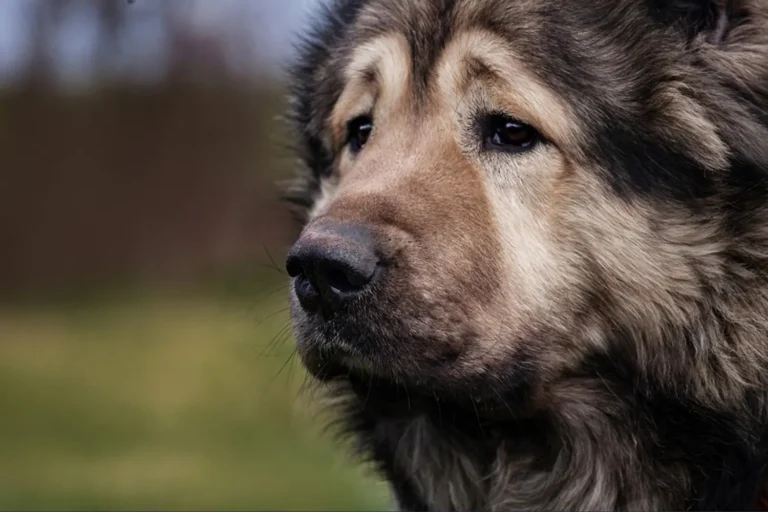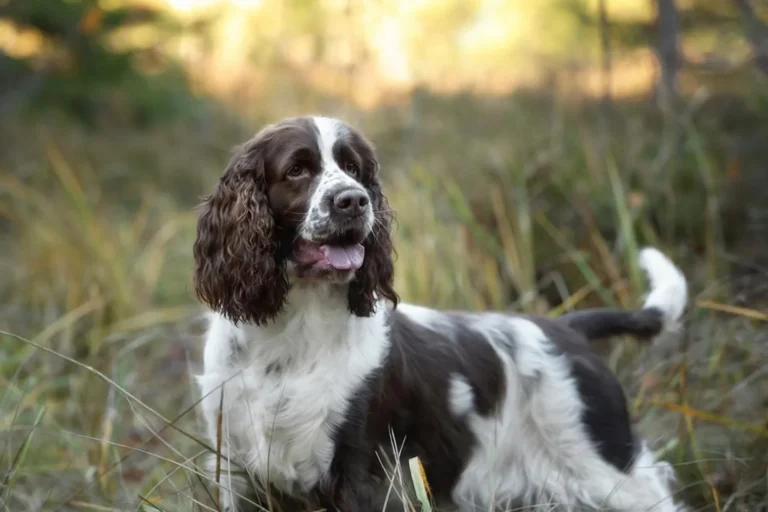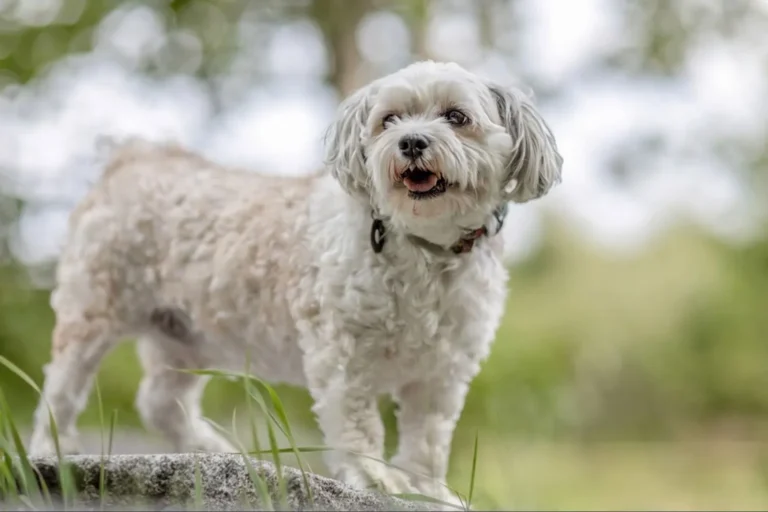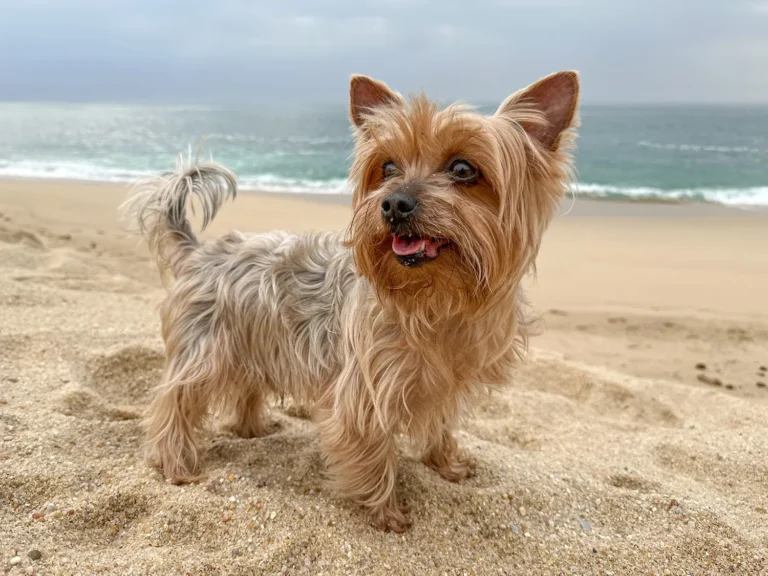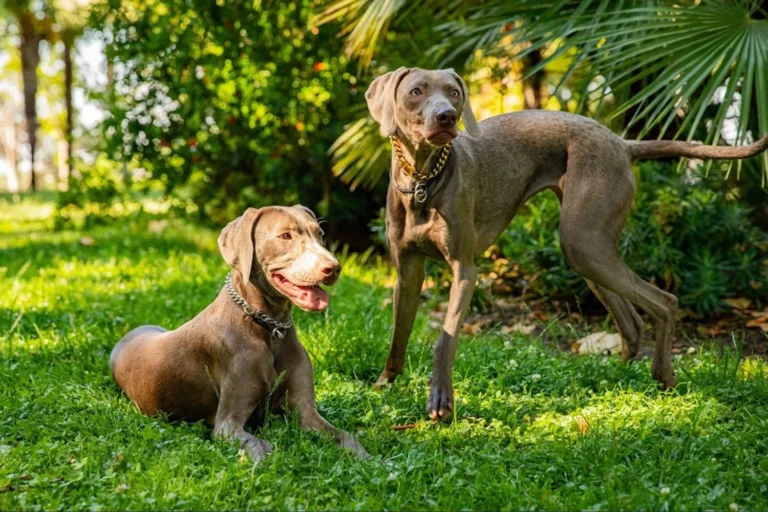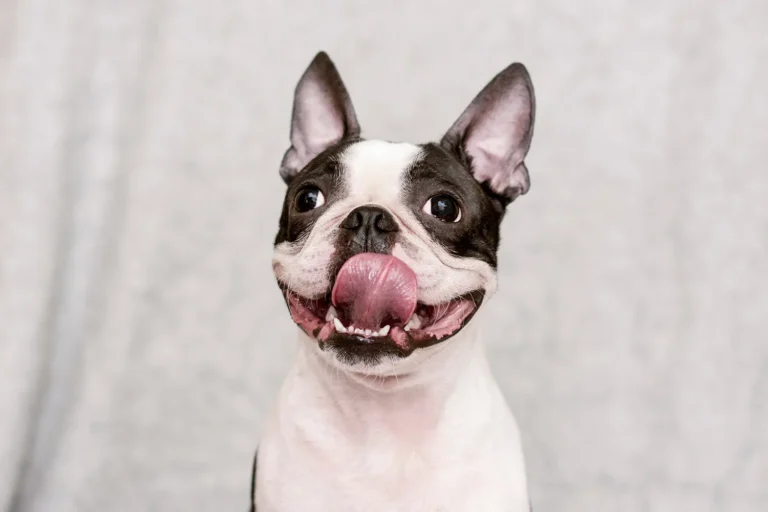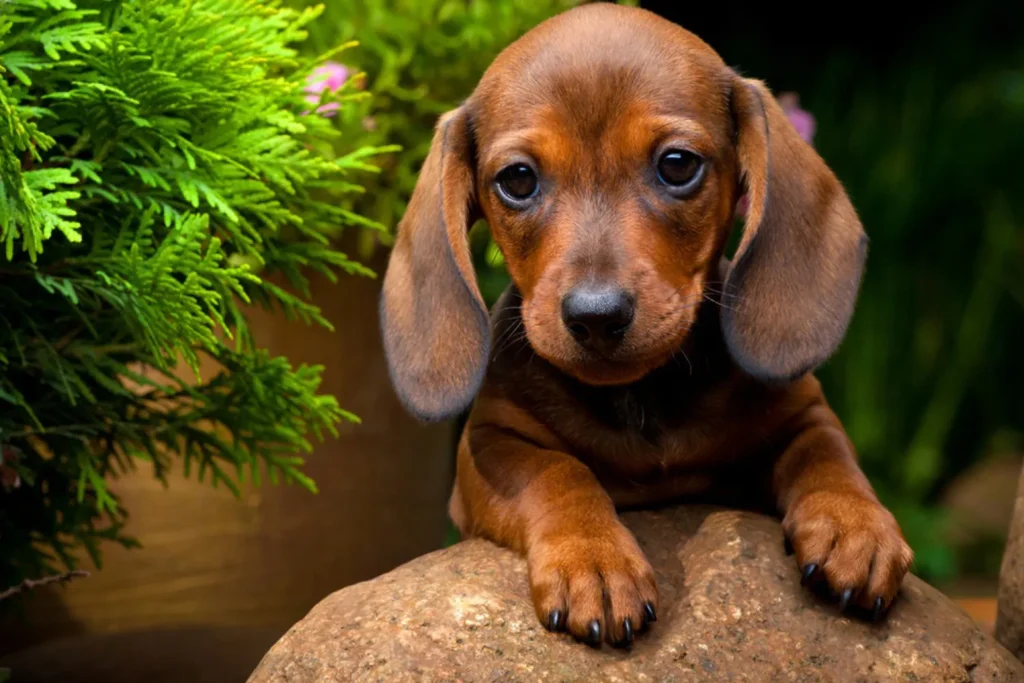
You may have heard of a Dachshund, but the Mini Dachshund is like the pocket sized version with the same big dog attitude. Also called sausage dogs or wiener dogs, they toddle around on those tiny legs with surprising confidence my neighbor’s mini, Noodle, struts past Labradors like he owns the sidewalk. They’re funny, bold, and wonderfully loyal, always ready to alert you to a suspicious leaf blowing by.
Don’t let their size fool you, though they still need daily walks and a bit of brain work. I like “sniffaris” (slow, sniffy walks) and simple puzzle toys to keep them happy. They’re smart and food motivated, but a touch stubborn, so keep training short and cheerful with plenty of treats. One tip I swear by: protect those long backs. Avoid lots of stairs and big jumps, use a harness for walks, and teach “up” and “down” carefully. And yes, they’re world-class cuddlers I’ve lost many evenings to a Mini Dachshund burrowed under my blanket like a tiny, toasty croissant.
What is the history & origin of the Mini Dachshund?
Picture a long, low little dog weaving through brambles in old Europe about six centuries ago that’s where the story begins. The Dachshund was developed to go after badgers, and their very name means “badger dog.” They needed to be bold, long bodied, and steady underground. Fast forward to the 1800s, the breed made its way to America, and by 1885 the American Kennel Club officially recognized Dachshunds. But a new problem popped up for hunters on this side of the Atlantic: hares. Smaller than badgers and tucked into narrower burrows, they called for a downsized version of the same fearless, digging machine.
At first, hunters just picked the smallest puppies from standard Dachshund litters and put them to work. That helped, but not enough those burrows were tight, and even the “runts” were sometimes too leggy. I remember hearing an old timer at a field event chuckle, “Great noses, wrong plumbing for the tunnels.” So breeders tried speeding things up by crossing standard Dachshunds with tiny terriers and pinschers. The idea made sense on paper, but in practice those mixes often lost what made Dachshunds so good: that laser focus, nose to ground tracking style, and steady courage in the dark.
So they took a step back and slowed down, returning to careful selection within Dachshund lines. Generation by generation, breeders paired dogs that were naturally smaller yet still long bodied and determined. It wasn’t glamorous work. A breeder I spoke with in California once told me it was like “carving a statue with a toothbrush” tiny, patient changes that preserved the true Dachshund spirit. The result was the Miniature Dachshund we know today: compact enough to slip into narrow tunnels, but still very much a Dachshund through and through.
If you live with a mini, you can see echoes of that history every day. The way they nose under blankets? That’s burrow work. The quick, paddle like digging at the park? That’s a hare hunter getting to business. I once met a mini named Greta who could disappear under a hedge at lightning speed, then pop out proudly with a tennis ball like she’d just cleared a warren. My advice for owners: channel that heritage. Give them scent games, short tracking exercises, and safe places to dig. It keeps their minds happy and pays homage to a small dog with very big roots.
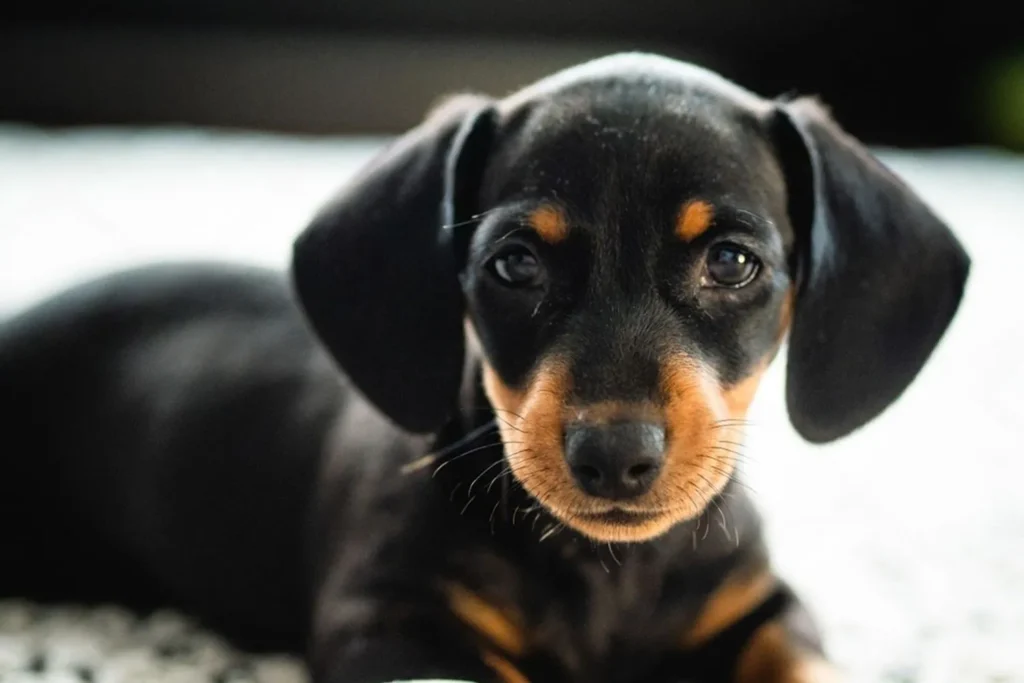
What Is a Mini Dachshund?
The Mini Dachshund is the pocket sized member of a proud German hound family, famous for that long, low silhouette and a surprisingly big dog attitude. They were originally bred to track and dig out foxes and badgers from their dens hence the nickname “badger dog.” It even shows up in their name: dachs means badger and hund means dog. That fearless streak runs deep; Dachshunds would sometimes band together to take on wild boar in packs. No wonder a Mini can strut into a room like it owns the place.
I always tell people that living with a Mini Dachshund is like having a tiny explorer in the house. They love to sniff, tunnel, and burrow mine once spent an entire afternoon determined to excavate a squeaky toy from under the couch, grunting like a dedicated little miner. They come in three coat types short (often called smooth), long, or wirehaired so grooming can range from a quick weekly brush to a bit more upkeep for those glorious long feathers or that wiry beard. Whichever coat you pick, be prepared for a dog that adores blankets; I’ve lost many a throw to a determined burrower.
Miniature Dachshunds are simply a smaller version of the Standard, with the same heart, courage, and sense of humor packed into a compact frame. They thrive with short, fun bursts of exercise and scent games that let their noses do the thinking. A little tip from experience: protect that long back by teaching them to use ramps or steps and supporting both chest and rear when you lift them. Train with patience, keep things playful, and you’ll have a loyal, spirited companion who’s equal parts clown and courageous hunter just in a pint sized package.
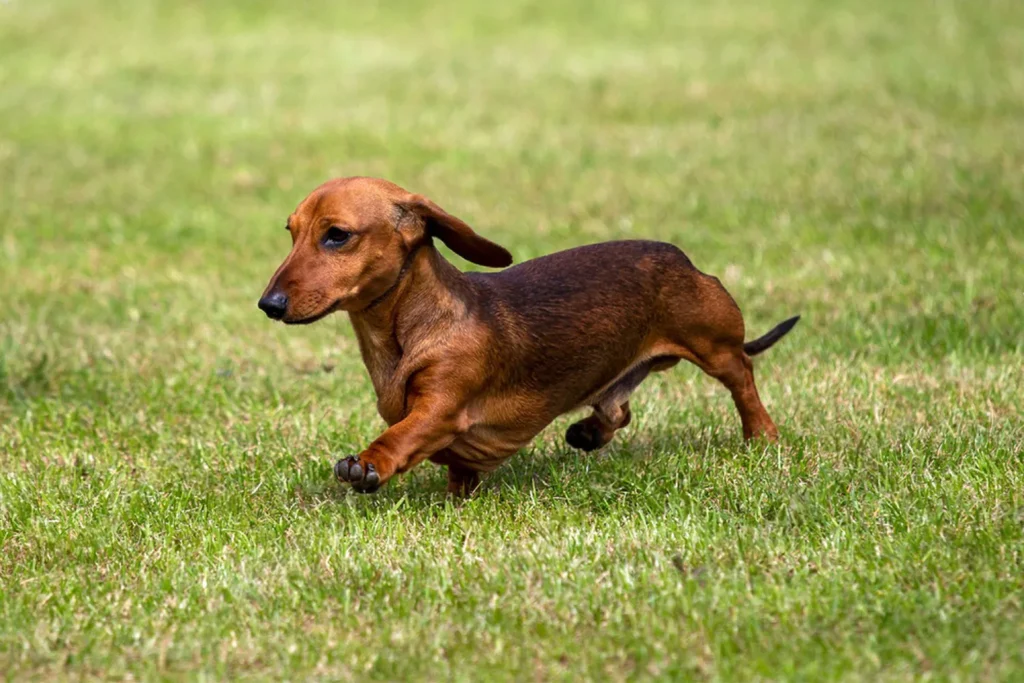
Who Is a Mini Dachshund Best For?
Think little comedian with a curious nose and a big heart. Miniature Dachshunds thrive as family pets because they adore being involved in whatever you’re doing laundry, movie night, even brushing your teeth. If you’re the type who enjoys cuddly lap time and narrating your day to a wagging audience, you’ve found your match. I once met a Mini named Pickle at a neighborhood coffee cart who insisted on hopping into his owner’s tote bag just to stay close peak Dachshund.
They’re social butterflies when introduced properly. Minis usually get along well with other pets, especially when you take introductions slow and steady. I had great success using baby gates and short, calm meet and greets when we brought our Dachshund home to our resident cat; within a week they were politely sharing sunbeams. With smaller pets like rabbits or hamsters, I’d keep things supervised and separate curiosity is strong in these little hunters.
Be ready for personality. Dachshunds are hilariously bold and a touch stubborn, which is part of their charm. Early socialization puppy classes, relaxed walks, and friendly dog meetups helps channel that confidence into good manners and keeps the barkiness in check. They don’t need marathon runs, but they do love sniffy strolls and brain games. A five minute scent trail down the hallway can tire mine out more than a long walk.
Most importantly, Minis flourish with company. If you’re away from home a lot or rarely have time to socialize your dog, a Dachshund won’t be your best fit. When I briefly worked long shifts, a midday dog walker made a world of difference, but long-term, they’re happiest with someone around work from home folks, retirees, and families who enjoy doting on a dog will feel like they’ve struck gold.
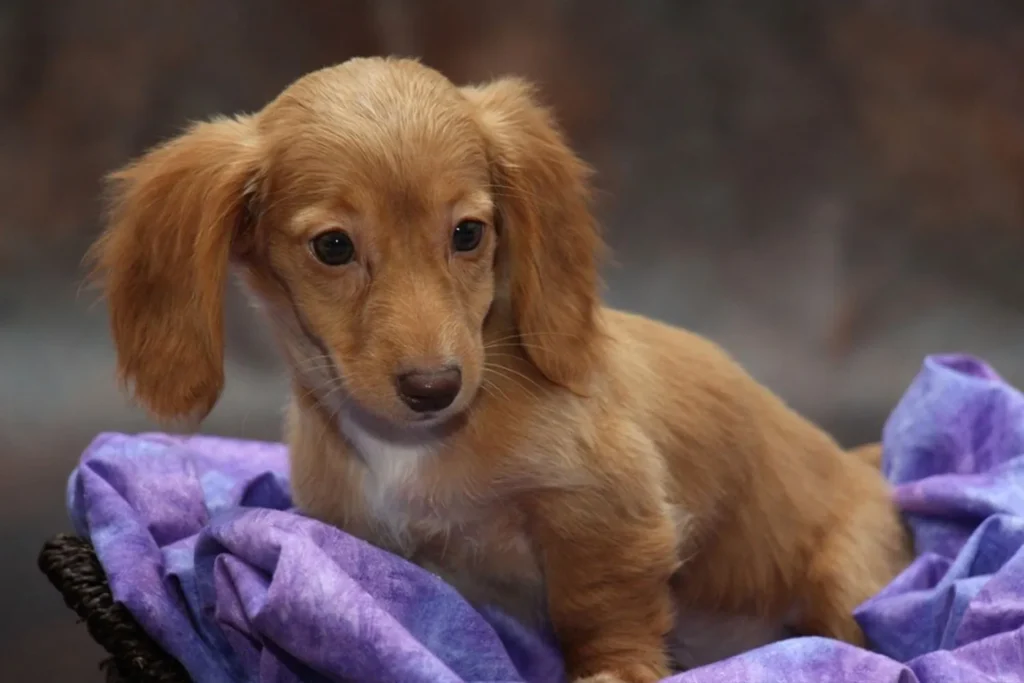
Mini Dachshund Grooming & Shedding
Mini Dachshunds come in three coat types smooth, long haired, and wirehaired and each one asks for a slightly different routine. For the smooth (short haired) sausages, a quick weekly brush does wonders. I like a rubber grooming mitt or a soft bristle brush; five minutes on the couch and you’ll catch a surprising amount of loose hair before it ends up on your black jeans. A quick wipe with a slightly damp microfiber cloth adds a nice shine, too.
Long haired Dachshunds need a bit more attention think a few times a week to stop mats before they start. Use a slicker brush and a metal comb, and be sure to lift the hair around the ears, behind the legs, and along the tail where tangles love to hide. I once skipped a week with my friend’s long haired mini, and we discovered a sneaky knot behind one ear that took treats, patience, and a detangling spray to sort out. A little, often, is the secret.
Wirehaired Dachshunds are charmingly scruffy and need weekly brushing plus hand stripping a few times a year to keep the coat healthy and tidy. If you’re new to stripping, a professional groomer is your best teammate watch them once, then decide if you want to try at home with a stripping knife or stone. Their iconic eyebrows and beard may also need occasional trimming so they can see clearly and don’t carry around crumbs like a tiny mustachioed baker. I met a wirehaired named Otto at a beach meetup who looked like a dapper grandfather after his eyebrow trim adorable and practical.
Bath time can be once a month, depending on how enthusiastically your pup rolls in life’s muddy opportunities. Use a gentle dog shampoo and rinse thoroughly. Long haired coats benefit from a light detangling spray and a careful brush out while damp; I like to blow dry on low and cool, moving the brush as I go to prevent tangles. Nails need regular attention, too about every three to four weeks for most dogs. If you hear click click on hardwood floors, it’s time. A nail grinder can be less intimidating than clippers; I pair it with peanut butter on a lick mat and keep sessions short and sweet.
Ears and teeth deserve weekly care as well. Peek inside the ears for redness, odor, or wax buildup, and use a vet approved ear cleaner with cotton pads never push anything deep into the ear canal. For teeth, brush a few times a week with dog safe toothpaste (poultry flavor is a hit in my house). Start by letting your pup lick the paste, then gradually introduce the brush. Dental chews help, but nothing beats a proper brush.
A quick note on shedding: smooth and wire coats tend to shed lightly year round, while long haired pups can have seasonal fluff ups. A balanced diet and omega-3s (if your vet agrees) help keep the coat glossy. Keep a lint roller by the door, toss a washable throw on the couch, and make grooming a mini ritual five minutes here and there, a few treats, and you’ve got a happy, tidy little dachshund.
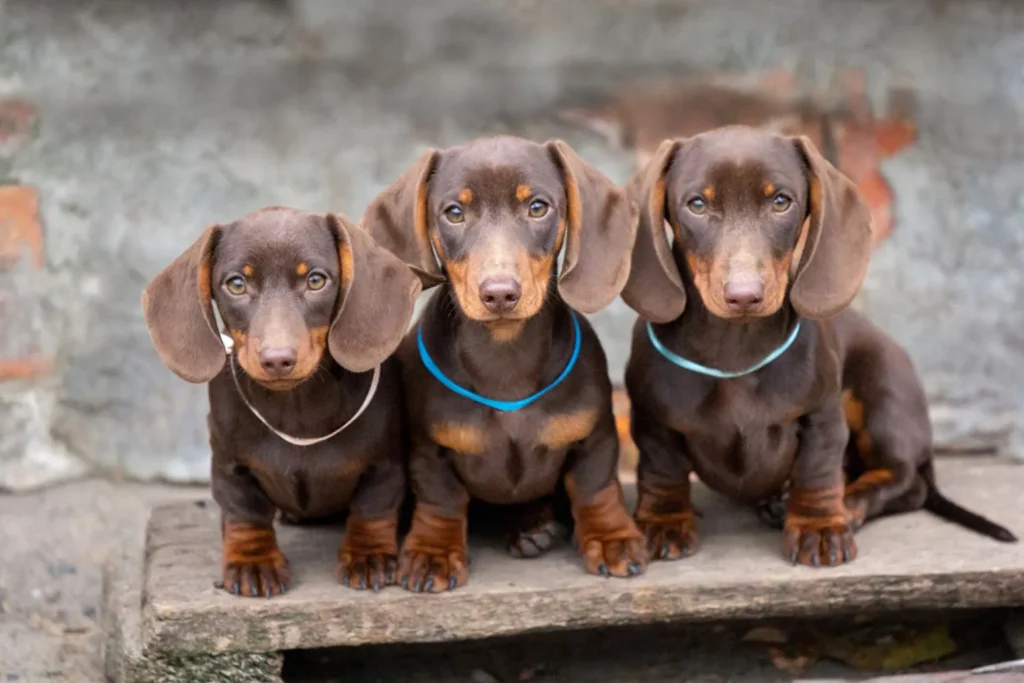
Do Mini Dachshunds Bark a Lot?
With their tiny bodies and big dog bravery, Mini Dachshunds often play the role of little watchdogs. They were bred for hunting, so that sharp, quick bark is their way of sounding the alarm especially at strangers, doorbells, and suspicious leaves blowing across the porch. My friend’s mini, Pip, used to declare war on the recycling truck every Tuesday until we worked on it together.
The good news: with the right socialization and training, they’re very friendly and can learn to keep it down. Start early introduce new people, sounds, and places, and reward calm behavior. I like to let mine give two “announcement” barks, then cue “quiet” and treat when he settles. Teaching a go to spot for greetings helps too. Keep their minds busy with sniffy walks, puzzle toys, and short training bursts; a busy brain barks less. Consistency is key, and when they’re properly introduced, these little hunters are sweet as can be.
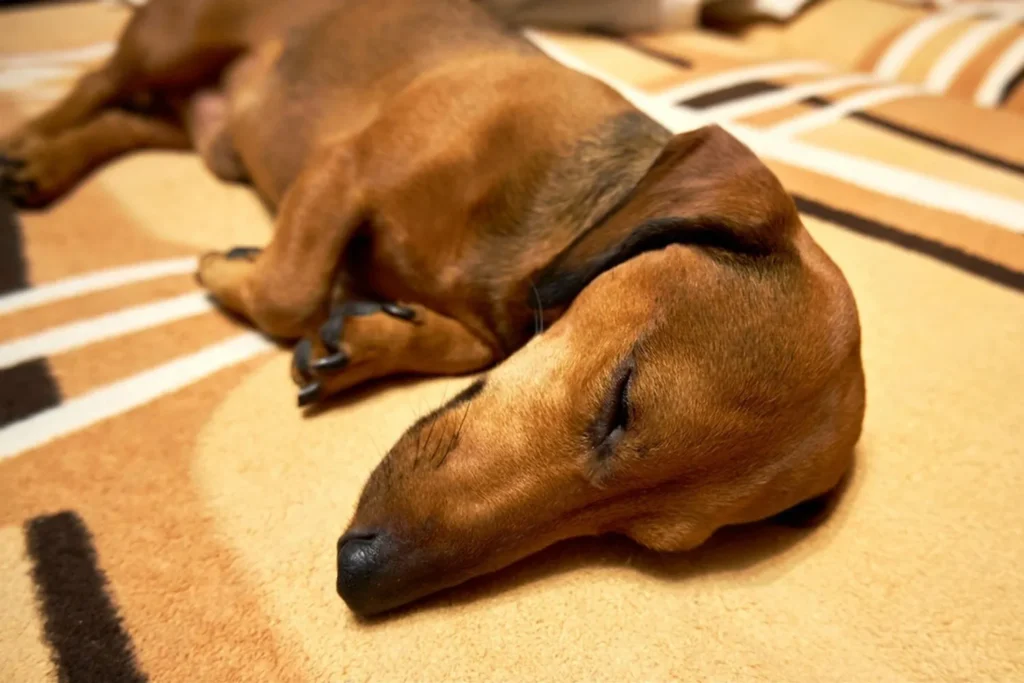
Average Weight and Height of a Mini Dachshund
Miniature really does mean mini with these little sausages. Most adult Mini Dachshunds stand about 15-20 cm tall at the shoulder and settle at a tidy 4-5 kg. In everyday terms, that’s roughly 6-8 inches tall and around 9-11 pounds small enough to scoop up with one arm, but surprisingly solid when you do. My friend’s mini, Pickle, always looks like a toy until the vet’s scale pops up at 4.6 kg and we all go, “Oh! Dense!” https://en.wikipedia.org/wiki/Dachshund
Because they’re long backed, keeping them in that healthy weight range matters more than you’d think. Extra kilos can put strain on their spine, so resist those pleading eyes at treat time and measure out meals. I like to do quick check-ins at home: hop on the bathroom scale alone, then again while holding your dog, and subtract the difference. For height, a soft tape measure at the shoulder (not the head) does the trick. Most minis reach their full size by about a year old, though they’ll often fill out a touch after that.
Remember, every dog has its own build some are leggier, some a bit stockier but if your mini is hovering around 15-20 cm tall and 4-5 kg as an adult, you’re in the right zone. If you’re unsure whether your pup is just fluffy or actually gaining, your vet can help you fine tune portions and keep that little back happy.
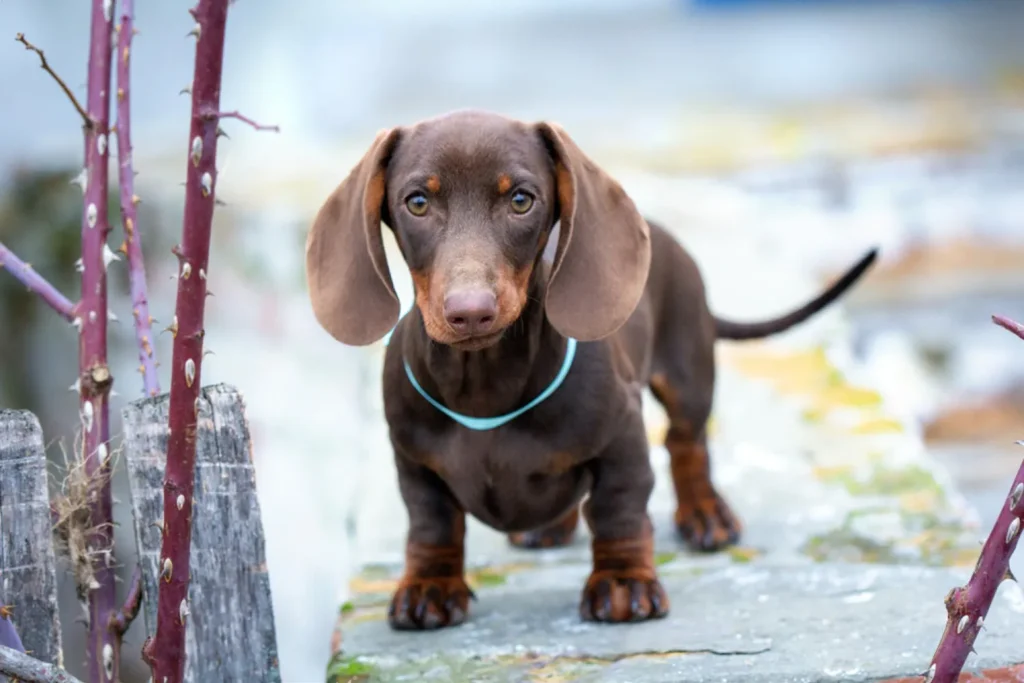
Are Mini Dachshunds Easy to Train?
Short answer: they’re smart enough to learn anything you teach them, but they’ll make you earn it. Mini Dachshunds are bright and funny, with an independent streak that can feel a bit… negotiable. As scent hounds, their noses are tiny divas one whiff of something interesting and your training session becomes a sniffing expedition. Keep sessions short, upbeat, and frequent. I aim for 3-5 minutes, a few times a day, and stop while my dog is still excited. If I push past that, I can practically see the little gears switch from “work mode” to “snack nap.”
Start early with both socialization and training. Positive reinforcement is essential for Dachshunds praise, treats, and play. Harsh corrections just make them shut down or dig their heels in. I made the mistake of using a stern voice once and my pup stared at me like, “And what exactly do you think that will achieve?” A cheerful marker word or a clicker helps them understand what they did right. Use high value treats (tiny bits of chicken or cheese are gold) and train before meals to keep motivation high. Begin somewhere quiet, then gradually add distractions as they succeed.
Beyond basic obedience, focus on confidence building. Mini Dachshunds aren’t always fans of strangers, but positive experiences help. Let them observe new people and dogs from a comfortable distance, and reward calm curiosity. I love the “look at that” game when my dog glances at a stranger, I mark and treat. It turns potentially spooky moments into predictable, happy ones. Take them to different places safe, friendly dog classes, calm parks, even a hardware store for new sights and sounds letting them choose when to say hello.
A few extra Dachshund specific tips from the trenches:
– Lean into nose work. Scatter a few treats in the grass or use a snuffle mat to channel that powerful sniffer.
– Keep recall practice on a long line outdoors prey drive is real.
– House training can take patience with small bladders; frequent breaks and a consistent routine help.
– Protect their backs: teach “wait,” “off,” and use ramps to reduce jumping.
With consistency, humor, and the right rewards, Mini Dachshunds become wonderfully trainable little characters. They may test your patience, but when they decide to work with you, it’s pure joy.
How Do Mini Dachshunds Behave? A Look at Their Temperament and Personality
Mini Dachshunds are pint sized optimists with big dog attitudes. They’re cheerful, social, and surprisingly energetic for their tiny frames. Don’t let those short legs fool you these little sausages love playtime and benefit from more exercise than most people expect. I like to mix short, lively walks with “sniffaris” so they can use their noses, plus a few hallway fetch sessions to burn off steam without overdoing those long backs.
Now, about that famous Dachshund stubborn streak oh yes, it’s real. They’re independent thinkers and will absolutely try to negotiate. Training works best when you keep it fun and fast, with high value treats and lots of praise. A breeder I chatted with in California laughed and said, “With a Mini Dachsie, it’s not ‘Can they learn?’ It’s ‘What’s in it for me?’” Lean into games like nose work to turn their instincts into cooperation. And because their noses can lead their feet, practice recall in safe, enclosed areas.
For all their independence, Minis bond deeply with their people. Many become little shadows, trailing you from room to room and curling up like a warm croissant at your feet. My neighbor’s Mini, Pretzel, does laps around the yard and then insists on a solid hour of couch snuggles. Because they attach so strongly, it helps to teach calm alone time early and keep departures low key.
They’re usually friendly, though some can be cautious at first. Gentle introductions, good socialization, and clear boundaries go a long way especially around kids who may not realize how petite they are. Expect a bit of watchdog spirit; teaching a “quiet” cue keeps the commentary under control. With care, consistency, and plenty of love, Mini Dachshunds are joyful, loyal companions who bring an outsized amount of happiness into a home.
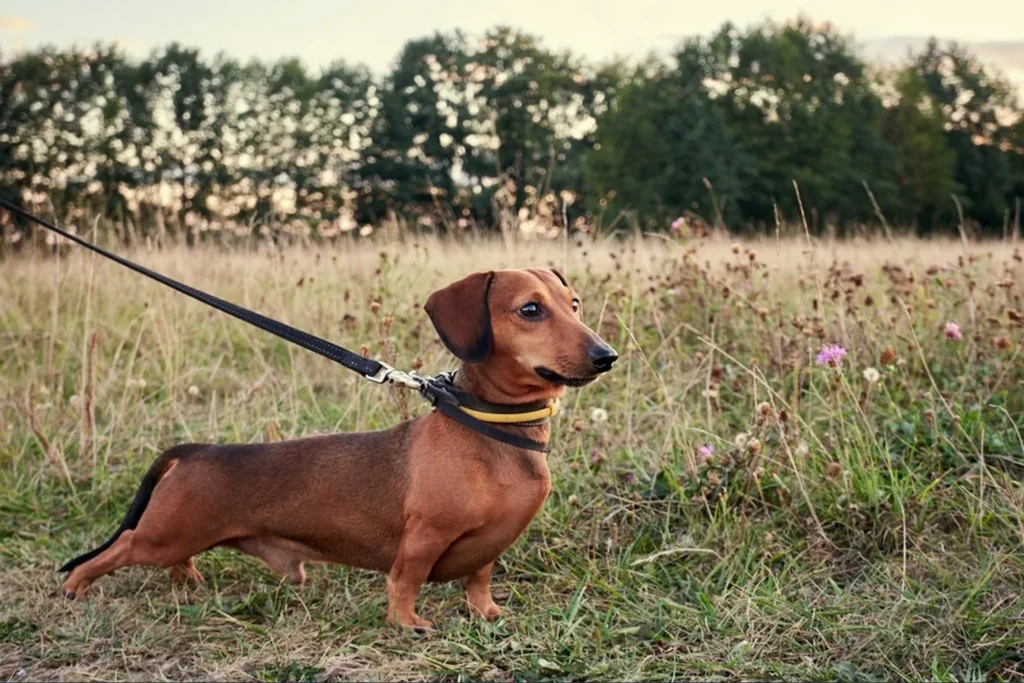
Do Mini Dachshunds have common health issues?
Mini Dachshunds are generally sturdy little dogs, but their unique build does come with a few things to keep an eye on. It doesn’t mean your pup will have these problems; it just means you’ll want to be a touch more proactive. I always say awareness is half the battle and the other half is keeping a few treats handy for bribery at the vet.
Back problems are the big one. That long spine and those short legs make Mini Dachshunds more prone to intervertebral disc disease. I learned quickly to use ramps for the couch and bed, and to lift with both hands-one supporting the chest and one under the rump so I’m not stressing the back. Try to discourage the high impact parkour routine off furniture and stairs. If you ever notice your dachshund hesitating to jump, yelping when picked up, walking wobbly, or acting stiff, call your vet right away. Keeping them lean is huge here; an extra pound on a tiny frame is like a heavy backpack on a small child.
Hips and knees can use a little TLC, too. Hip dysplasia can affect Dachshunds, even though it’s more famous in bigger breeds. Patella luxation the kneecap popping out of place can show up as a little skip in their step or sudden limping. My friend’s mini had a funny bunny hop every few blocks; turns out it was a mild luxating patella, and the vet gave simple strengthening exercises and activity adjustments that helped a lot. Around the house, rugs on slippery floors make a big difference, and regular, controlled walks keep muscles strong without overdoing it.
Those velvety ears are adorable but can trap moisture and debris, which is basically an invitation for ear infections. I make ear checks part of cuddle time: if there’s a sour smell, redness, or a lot of head shaking, it’s time for a cleaning or a vet visit. After baths or rainy walks, I do a quick gentle dry and use a vet recommended ear cleaner once a week. Eyes deserve a peek, too Dachshunds can be prone to irritation and certain eye conditions. Watch for redness, squinting, cloudiness, or goopy discharge. One tip I learned the hard way: no head out the window rides. It looks cute, but dust and wind aren’t kind to sensitive eyes.
The good news? With smart habits and regular checkups, most minis thrive. Keep them at a healthy weight, use a harness instead of a collar for walks, set up ramps, and ask your vet about screening hips and knees and keeping an eye on those ears and eyes. A little prevention goes a long way and leaves more time for snuggles and those hilarious zoomies down the hallway.
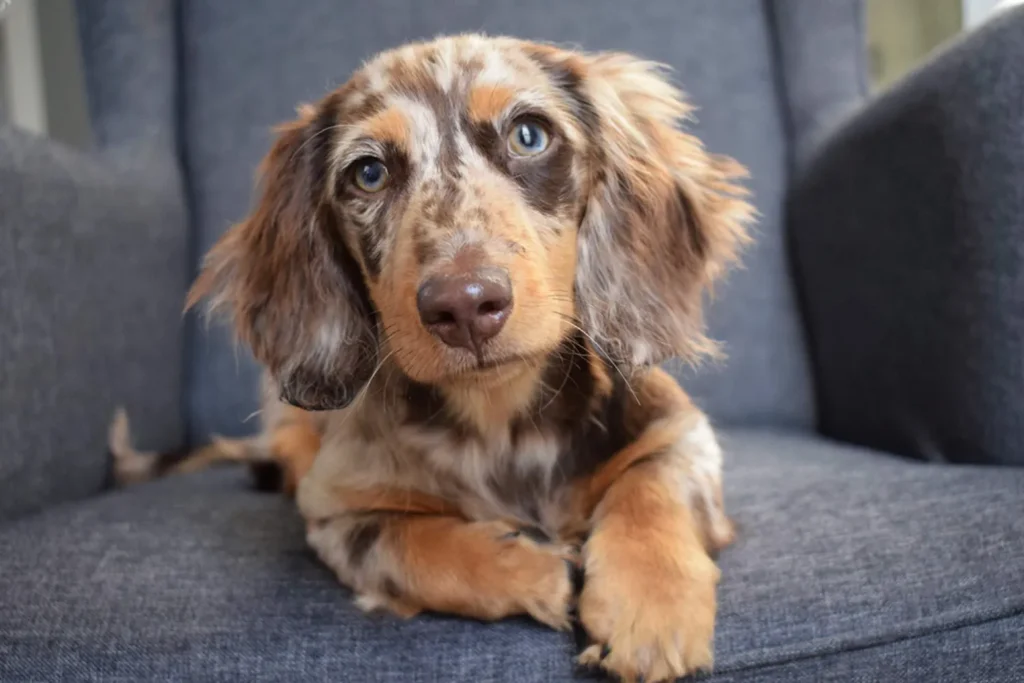
What is the lifespan of a Mini Dachshund?
Most Miniature Dachshunds happily toddle along for about 12-16 years. They’re small dogs with big personalities, and that combo often means a nice, long life by your side. I still smile thinking about my neighbor’s mini, Peanut, who celebrated his 16th birthday with a jaunty stroll and a nap in a sunbeam. Some doxies even tiptoe past that range, but 12-16 is a realistic expectation for most families.
Regular vet checkups are a big part of keeping them thriving annual visits while they’re adults, and twice yearly once the gray hairs appear. Staying on top of dental care, weight, and bloodwork can catch little issues before they turn into big ones. I always use a harness instead of a collar, and I keep a small ramp by the couch to protect that long back from jumping. Keep them slim, offer daily walks at a sensible pace, and sprinkle in brain games like snuffle mats or hide and seek with treats. With good food, fresh water, comfy bedding, and lots of love, your mini doxie has a great chance at a long, happy, tail wagging life.
How Much Should a Mini Dachshund Eat?
Mini Dachshunds do best on a complete, balanced dog food that’s formulated for small breeds. The smaller kibble is easier for their little mouths, and those recipes are designed to pack in the right vitamins, minerals, and nutrients for a tiny but busy body. I remember switching my own mini to a small breed formula and watching her go from nibbling to happily crunching every bite.
Puppies usually need 3-4 small meals spread throughout the day to keep their energy steady and tummies happy. As they grow up, you can move to two measured meals a day. How much ends up in the bowl depends on age, activity level, and metabolism my friend’s mini is a couch cuddler who eats less, while mine is a squirrel spotter who seems to burn calories just with her daily zoomies. Use the feeding guide on your dog food bag as a starting point, then fine tune. A simple kitchen scale or measuring cup helps more than you’d think; the day I stopped eyeballing portions, my dog’s weight finally leveled off.
Dachshunds are notorious for packing on pounds, and extra weight is tough on their long backs. Keep treats modest and count them as part of the daily ration I like to set aside a little of breakfast kibble to use for training throughout the day. Do a quick rib check now and then: you should be able to feel ribs without digging and see a nice waist from above. Fresh water should always be available, and regular exercise brisk walks, sniffing adventures, and gentle play keeps them fit without overdoing jumps or stairs.
Every dog is different, so if you’re unsure about portions or notice sudden weight changes, your vet can tailor a plan that suits your mini’s age, body condition, and lifestyle. It’s amazing how much better they move (and how much brighter their eyes look) when the food and routine are just right.
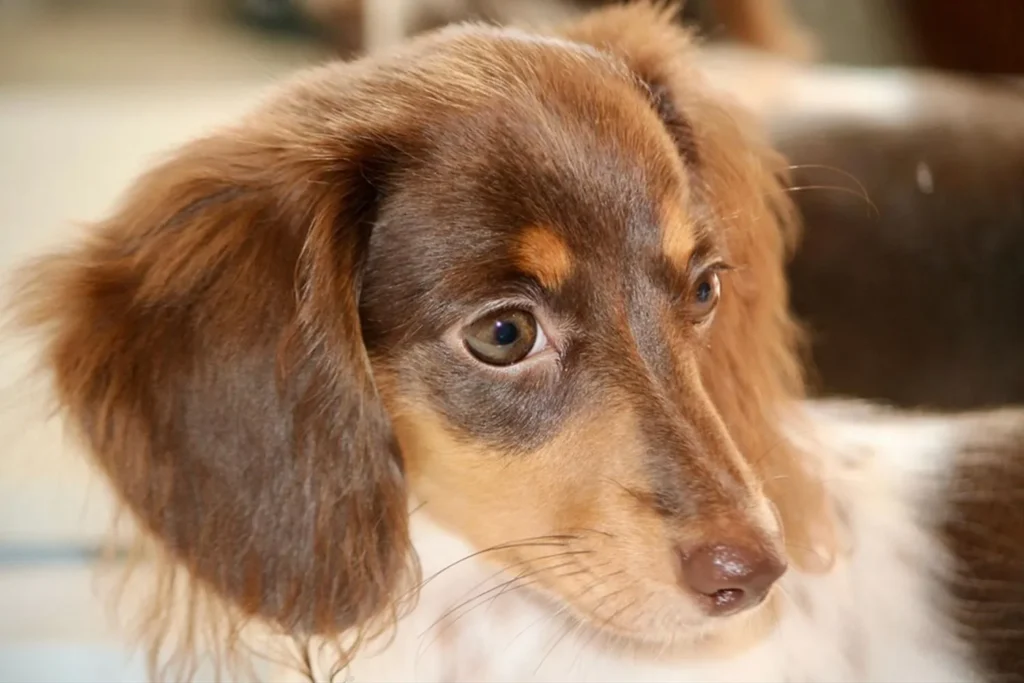
Mini Dachshund FAQs
At what age does a Mini Dachshund calm down?
If your tiny torpedo is ricocheting off the furniture, take heart most Mini Dachshunds start to mellow around the 12-month mark. That first birthday can be a real turning point. I remember counting the days with one particularly spicy pup who loved doing zoomies right when I wanted to watch a show. Around a year old, it was like someone found the “off switch.” That said, every dog is an individual. Some smooth out sooner, some take a few extra months. Consistent routines help a ton: a couple of short, purposeful walks, a sniffari in the yard, and a few minutes of training or puzzle toys to work their brains. I kept a stuffed chew ready for “zoomie o’clock,” and it taught my doxie that evenings meant settling down, not redecorating the living room with squeaky toys.
Is a Mini Dachshund ideal for a first time dog owner?
It depends on you. Mini Dachshunds are clever, funny, and loving but they also come with that classic stubborn streak. If training isn’t your comfort zone yet, they can outwit you faster than you can say hot dog. If you’re willing to learn, though, they’re incredibly rewarding companions. Short, upbeat training sessions work best; they love food and praise, so use that to your advantage. Puppy classes were a lifesaver for me with my first doxie, and getting the whole household on the same page made things click. A quick tip specific to their build: protect that long back. Use a harness for walks, discourage jumping off furniture, and add a little ramp if your couch is their happy place. With research, patience, and consistency, a first time owner can absolutely thrive with a Mini Dachshund.
Do Miniature Dachshunds like to be held?
Oh yes. These dogs are born snugglers. They’re pack oriented, loyal, and unapologetically clingy in the best way. Expect a little shadow following you from room to room and the occasional “excuse me, it’s cuddle time now” paw tap. Many doxies also love burrowing; I used to find mine snoozing under my hoodie like a tiny, satisfied baked potato. Just be mindful of how you hold them: support both the chest and the rear so their spine stays aligned. A proper hold and gentle handling keep them comfortable and safe. Some prefer curling up next to you rather than in your arms, so respect their mood and teach a cue like “up?” to ask for consent. Either way, prepare for daily dose(s) of affection.
Can Mini Dachshunds be left alone all day?
Nope. They’re not built for long solo stretches. As pack animals, they crave company, and leaving them alone too long can lead to stress or mischief. In practical terms, they shouldn’t be left for more than about four hours at a time both for a potty break and to stretch their legs. If you work longer hours, line up help: a trusted neighbor, a dog walker, or a reputable doggy daycare. Before you head out, give them a sniffy walk and a chew or puzzle feeder to take the edge off. I also practiced short departures at first out the door for five minutes, then ten so my pup learned that I always come back. A comfy crate or pen can be useful for short stints, but it’s not an all day solution. With a plan and a routine, your doxie can feel secure even when you’re not home.
Disclaimer:
This article is for informational purposes only and doesn’t replace professional veterinary or training advice. Always consult a certified vet or dog trainer for guidance specific to your pup.
